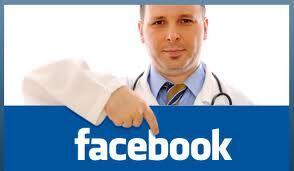Though the medical community has been slow to adopt social media as part of its business model—and possibly for good reason—social media is here to stay as the new medium of communication. While there are certainly pitfalls associated with healthcare providers’ use of social media, the fact remains that Facebook, Twitter, and other outlets can be effective tools to promote your practice, disseminate information, and share ideas.
Social media should not, however, be used by healthcare providers to communicate directly with patients, provide medical advice, promote products, or warrant outcomes. Further, physicians and other healthcare providers need to be cognizant of the potential permanency of a social media post. While social media account managers can delete or remove posts and other information shared online, subscribers and “friends” can take screen shots or print errant posts before they are deleted. These potentially damaging posts can live forever.
Social Media and Patient Privacy
Patient privacy is probably the most significant consideration when mixing medicine with social media. The lines of the physician-patient relationship often can become blurred in the social media context if appropriate precautions are not taken. Further, because of the potential for anonymity among bloggers and other social media commenters, there is no guarantee that “patients” actually are who they say they are, and vice versa. That’s why healthcare providers need to follow a few simple rules when establishing a social media presence in order to ensure they maintain appropriate boundaries, respect patient confidentiality, and best promote their practice:
(1) NEVER post about patients. When using social media, it’s not enough to simply eliminate patient-specific data such as name, date of birth, or social security numbers. Physicians have been disciplined for blogging or commenting about patients or the care provided, even when the post seemed completely devoid of personal information. If there is any way for a third party to identify the patient through the information contained within your post, it should not be posted. When in doubt, don’t post.
(2) Keep personal accounts separate from business accounts. Business pages can be set up to provide practice information only, such as business hours, holiday closings, new additions to the practice, upcoming events, etc. These business pages do not include “friends” or allow “comments” by non-approved administrators.
(3) If you maintain a personal Facebook, Twitter, or other social media account, always decline friend requests from patients. A professional boundary must always be present between patients and physicians. This boundary can be blurred or even dissolved when social media communication is allowed.
(4) Maintain the highest levels of security for your personal account(s) and business page. Routinely check your account settings to ensure that the privacy and security settings are constantly updated since many social media sites, particularly Facebook, change their security settings on a fairly regular basis. If you have a business Facebook page or Google+ page, then disable outsiders’ ability to comment, post or tag photos in order to make sure that the communication is one-way (from you) only.
(5) Do not provide medical advice, whether solicited or not, on blogs or social media posts. Even innocent comments on others’ pages can be deemed “advice” and should be avoided. For example, a friend of a friend might post a comment about post-appendectomy incisional pain, to which you respond “Don’t worry, that’s normal.” Such a post is technically a comment on the patient’s medical status and could potentially impact that individual’s treatment decisions. It also raises the question of whether a physician-patient relationship exists as a result of the communication.
(6) Implement a social media policy for your practice, and ensure your office staff is familiar with the policy. In fact, it’s a good idea to have your employees sign a social media agreement and maintain that in their personnel file. Your policy should be clear that staff members are never to post about patients, period. Staff also should be prohibited from “friending” patients or communicating with patients through social media sites. Likewise, instruct your staff to maintain proper privacy/security measures, and make sure only allow responsible, trained staff members are allowed to administer your practice’s social media page(s) or blogs.
(7) If a patient somehow contacts you or a staff member about her care using social media, then immediately respond that you will call to discuss the issue. During your phone conversation, let your patient know that social media is not a suitable method of communication, and suggest that the patient call the office for future needs.
(8) Do not blog anonymously (see rule 5).
Final ‘Comments’
The number of social media outlets is growing every day, so it can be time consuming to monitor and ensure patient confidentiality, adequate security and proper boundaries. However, if properly managed, these sites can be a fun social outlet for communication with family and friends, and an effective tool to help promote your practice. Though social media has enormous potential, it is important for healthcare providers to ensure their online involvement is ethical, with a clear divide between personal and business uses.
The Texas Medical Association provides a social media guide on its website, which can also be a helpful tool when navigating the wide world of social media.
One final word of advice, whether it’s a professional blog, your practice’s Facebook page, or your personal Twitter account: Take a moment to reflect before posting. (Note: public Tweets are archived by the Library of Congress!)



 Your new post is loading...
Your new post is loading...











